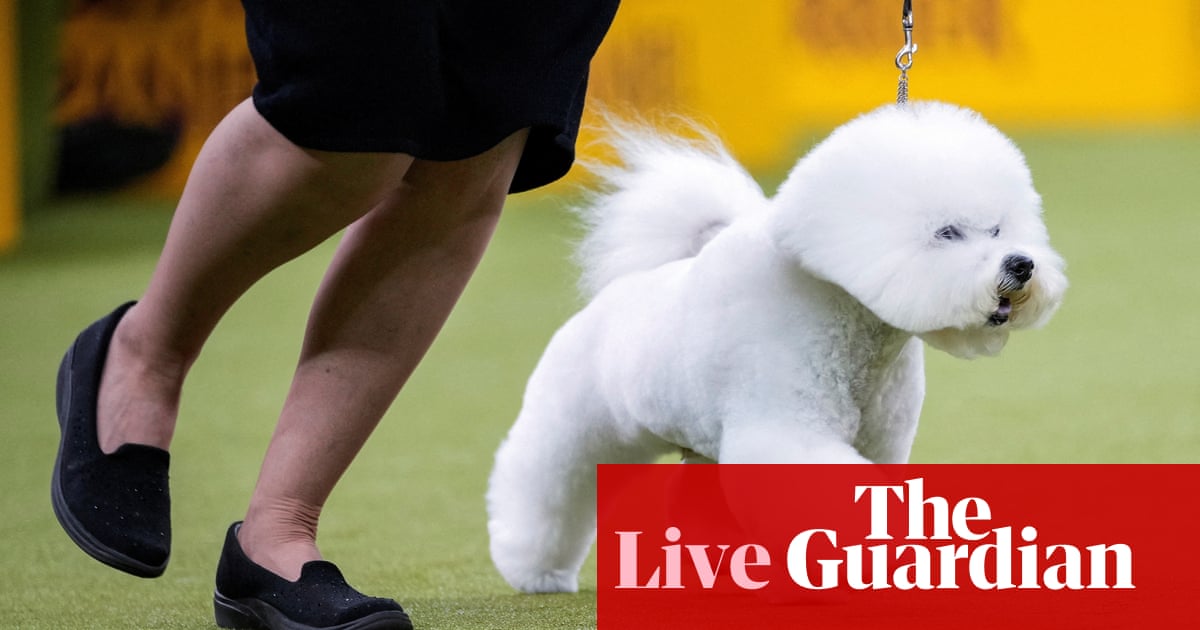
Okina masks are considered to be the oldest noh masks. This one is a Hakushiki-jō mask with a long white beard in horsehair, split movable jaws and bushy eyebrows.
Photograph: Kitazawa Sohta

Fudō Myōō is one of the five esoteric Buddhist deities known as Wisdom Kings. This Fudō mask was used in the English noh Oppenheimer in 2015, about the development of the atomic bomb.
Photograph: Kitazawa Sohta

Kitazawa Hideta performs the kyogen Shimizu, about a servant tricking his master, using an oni-buaku mask at the Yorozu Stage, Tokyo, 2017.
Photograph: Kitazawa Sohta

This saru mask is used in the play Saru Muko, about a monkey wedding.
Photograph: Kitazawa Sohta

Zō-onna ‘mother spirit’ mask from the English noh Pagoda 2009 and also used in the English noh Between the Stones in 2020.
Photograph: Kitazawa Sohta

The hannya mask is one of the most recognisable noh masks with its two prominent horns. It is named after its creator, Hannya-bō, and represents a female character whose anger or jealousy has caused horns to grow on her head.
Photograph: Kitazawa Sohta

Kinue Oshima performing in Sumida River, about a ferryman and a woman searching for her son, at the University of the Incarnate Word, San Antonio, Texas, 2015.
Photograph: David Surtasky

Masanobu Oshima performs in the noh Takasago at the National Noh theatre, Tokyo, 2011. Noh and Kyogen Masks: Tradition and Modernity in the Art of Kitazawa Hideta by Jannette Cheong and Richard Emmert is out now, published by Prestel
Photograph: Kitazawa Sohta











 English (US)
English (US)